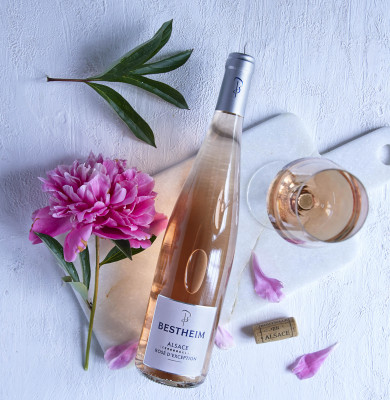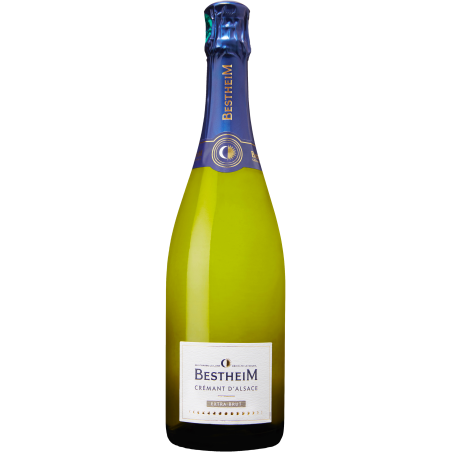
Why do the wine bottles have different shapes ?
You've probably noticed that not all wine bottles have the same shape. Why so many shapes for our French wine bottles?
We take a look at the question in this episode of EXTRA BRUT - our educational web series about wine, with the gastronomic agitator Nicolas Rieffel. The objective: to answer in record time all the questions you may have once asked yourself about wine...
Answers delivered by the "Moon Chasers", members and employees of the Bestheim winery.
At the origin of the different shapes of wine bottles: tradition and regulations!
The glass bottle is an innovation that was widely spread from the 18th century onwards. Its use became standardised when it was realised that wine kept better in bottles than in barrels! Very quickly its capacity was fixed at 75 cl. On the other hand, the shape of the bottle varies: rounded, slender, more square, more domed... Here is a small tour of France of wine bottles !
The Burgundian bottle
High, with soft shoulders and a fine neck, with a slightly conical barrel, it appeared in Burgundy at the end of the 17th century and is now widespread throughout the world.
The Bordelaise bottle
...also called "frontignan"! It is the most popular, often the one you imagine when you think of a bottle of wine. In the past, Bordeaux bottles were shaped like cones; but as this was neither very practical nor very solid, they became cylindrical. It is adopted in several other regions, which do not have their own bottle!
The Ligérienne
It's the famous fleur-de-lys bottle. It looks like the Burgundy bottle, only thinner. The coat of arms of the Loire Valley is engraved on the Angevine, while the bottle used for the Muscadets bears the name of the appellation at the bottom of the barrel.
The Provençale
There are two types of bottles for the Côtes de Provence appellation: the wines of the owners are bottled in "flutes with a corset" (whose base is narrower), while the merchants use the "Côte-de-Provence".
The Rhone Valley
This is the bottle of Châteauneuf-du-Pape, with the "Côtes du Rhône" coat of arms engraved on the shoulder.
The Clavelin from Jura
This bottle is only used for Jura yellow wine. It has a smaller capacity than the others, only 62 cl.
And for finish, the Flûte d'Alsace (or Rhine Flute)
All in finesse and elegance, it is the highest of the bottles, whose specific shape is even protected by a decree dating from 1955! By law, it must have a straight, cylindrical-looking body, topped by an elongated neck whose height is approximately five times the base diameter. Its cylindrical part must reach approximately one third of the total height.
Bottles whose shape has been exported all over France and the world!
With these main characteristics, it is easy to identify where a wine comes from right at its bottle? Yes and no, because the shape of the bottle is not a patent prohibiting producers in other countries or regions from making similar bottles. For example, the Bordeaux bottle can be found in South Africa, Chile, the United States, Italy, Crete, Austria and Hungary. As for the Rhine Flute, it is used to bottle the wine of Blackcurrant, Crépy and Jurançon. Also, many wines from northern Italy, Germany, Austria and Eastern Europe are bottled in flutes.
In the end, only the Clavelin du Jura and the Flûte d'Alsace are included in the specifications of the appellations concerned to bear their names. As for the other forms, Bordeaux, Burgundy, etc., they are not subject to any regulation! Winegrowers therefore have the choice to put their wines in any shape of bottle.



